Subaru Outback: Model History and Buyer’s Guide
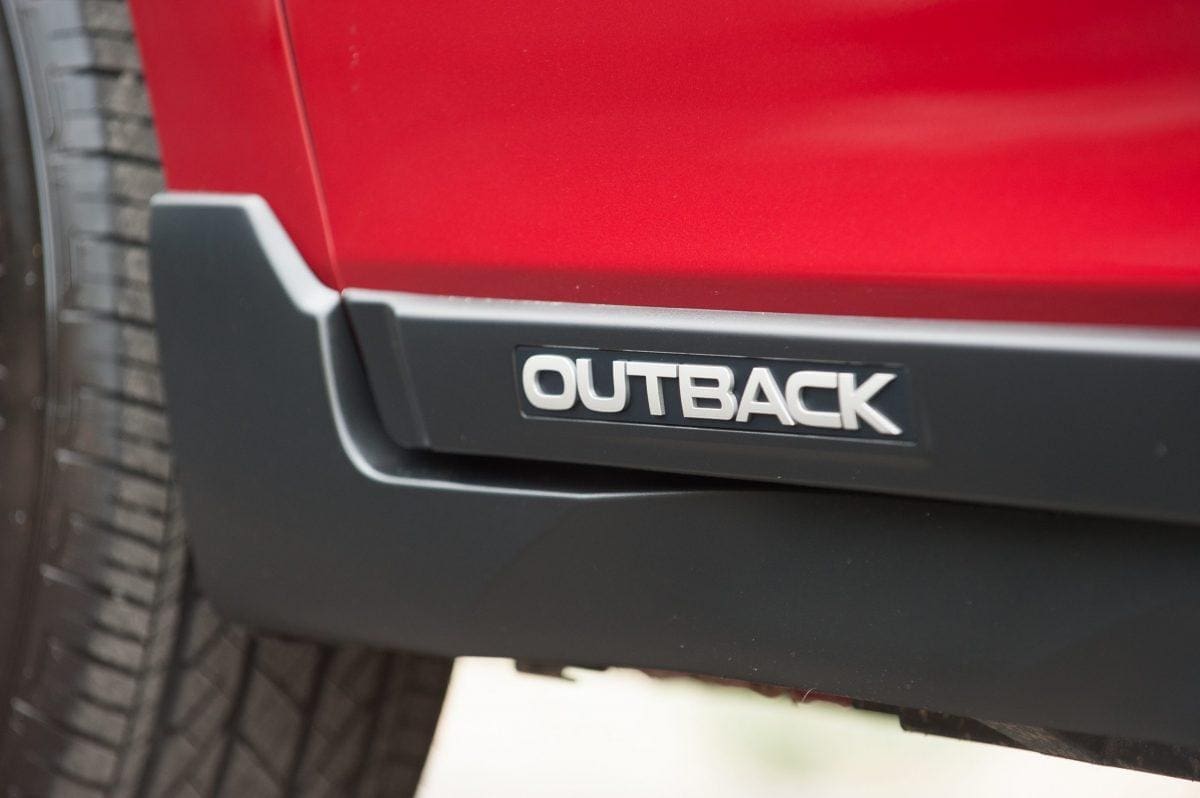
Contents
One of the most popular crossover SUVs in America is actually a station wagon. Well, sort of. Defining the Subaru Outback has never been easy. Is it a wagon? Or an SUV? The answer has always depended on who you ask. Its appeal, however, is undeniable.
Today, after nearly 30 years of sales success, the Outback seems like a no-brainer. But it was a radical idea at the beginning. Back then, most SUVs were trucks. Car-like crossovers — which combined the cool rugged image of an SUV with the more refined road manners of a sedan — weren’t commonplace. The original Subaru Outback helped invent the genre, and it remains one of Subaru’s bestselling models five generations later.
Birth of the Outback
In the mid-1990s, Subaru was already well known for its all-wheel-drive cars, but the Japanese brand was caught flat-footed by the sudden demand for SUVs in America. It didn’t have one. And budgets were tight. Its product planners, engineers, and designers had to get creative. Their solution was a stroke of genius.
They hastily added some rugged SUV touches to the popular Legacy Wagon and named it after Australia’s desolate interior landscape. The Outback concept, with its two-tone paint and high-riding suspension, befuddled some automotive journalists at the 1994 New York Auto Show, where it debuted. But the car-buying public loved it, and the following year Subaru launched the Outback as a trim level on the Legacy wagon, calling it the “World’s First Sport Utility Wagon.”
It wasn’t exactly the world’s first, though. To create the Outback, Subaru had basically copied a formula first introduced by the AMC Eagle, which was sold by American Motors and Chrysler from 1980 to 1988. While the Eagle was way ahead of its time, the Outback’s timing couldn’t have been better. Subaru’s new flagship was an immediate hit, and its strong sales over the years have not only underpinned the greater success of Subaru but also inspired other automakers, including Audi, VW, Volvo, Buick, Mercedes, and others, to create their own rugged wagon models.
Model History

1st Generation (1995-1999)
The first generation of the Outback was not only known for its car-like comfort, it had some actual SUV capability, including some real off-road performance. The 1995 model featured Subaru’s symmetrical all-wheel drive, a roof rack, and, like a small pickup, a cargo area that could swallow a 4-by-8-foot sheet of plywood when you folded its rear seat. In 1996, Subaru added a taller suspension and larger wheels and tires, giving the wagon 7.5 inches of ground clearance, and it raised its roof to increase cargo space.
Like Porsche, Subaru is known for its use of “boxer,” or horizontally-opposed, engines, which it has used in all six generations of the Outback. The original was fitted with Subie’s venerable EJ22 single overhead cam 2.2 liter four cylinder making 135 hp, while the double overhead cam 155 hp EJ25 2.5 liter, also used in the Legacy 2.5GT, became optional in 1996. Most were sold with an automatic transmission, but a 5-speed manual was offered.
Helped along by a brilliant marketing campaign that featured Crocodile Dundee star Paul Hogan, Outback sales were strong, and Subaru quickly copied its own concept, creating the smaller Impreza wagon Outback Sport as well as the Legacy SUS, which it labeled the “the World’s first Sport Utility Sedan.” The Impreza-based Outback Sport was the more successful of the two, lasting three generations from 1995-2011, and lives on today in spirit as the Subaru Crosstrek, also a hot seller.

2nd Generation (2000-2004)
Whenever Subaru would redesign the Legacy sedan and wagon, a new Outback would soon follow, and the second generation was introduced in 2000. This time, it was no longer a trim level on the Legacy wagon. The Outback had graduated to the big time and became its own model, while the Legacy SUS officially became the Outback sedan.
Subaru stayed true to the original concept, keeping the wagon’s hardware and dimensions essentially the same. It was a bit wider, longer, and heavier, but Subaru didn’t mess with success, and sales continued to climb.
Like the Legacy wagon, the Outback was built in Indiana and now featured a stronger structure and more aerodynamic shape. It also offered a six cylinder engine for the first time. Its new rear suspension offered a smoother ride and a quieter interior, which was also made more luxurious. Most were sold with the 2.5 liter four, now making 165 hp, but acceleration was still a bit sluggish, with 0-60 mph times over 10 seconds with the 4-speed automatic.
The new 212 hp 3.0 liter six cylinder dropped the wagon’s 0-60 mph time to about 8.5 seconds. Offered only with the automatic transmission, it was available in the H6-3.0 VDC model as well as a luxurious top trim level called the L.L. Bean Edition, designed in partnership with the outdoor apparel company. Both cost over $30,000, featured two-tone paint, and the brand’s first stability control system, called Vehicle Dynamics Control (VDC). Surprisingly, both of the Outback’s engines got about the same fuel economy.
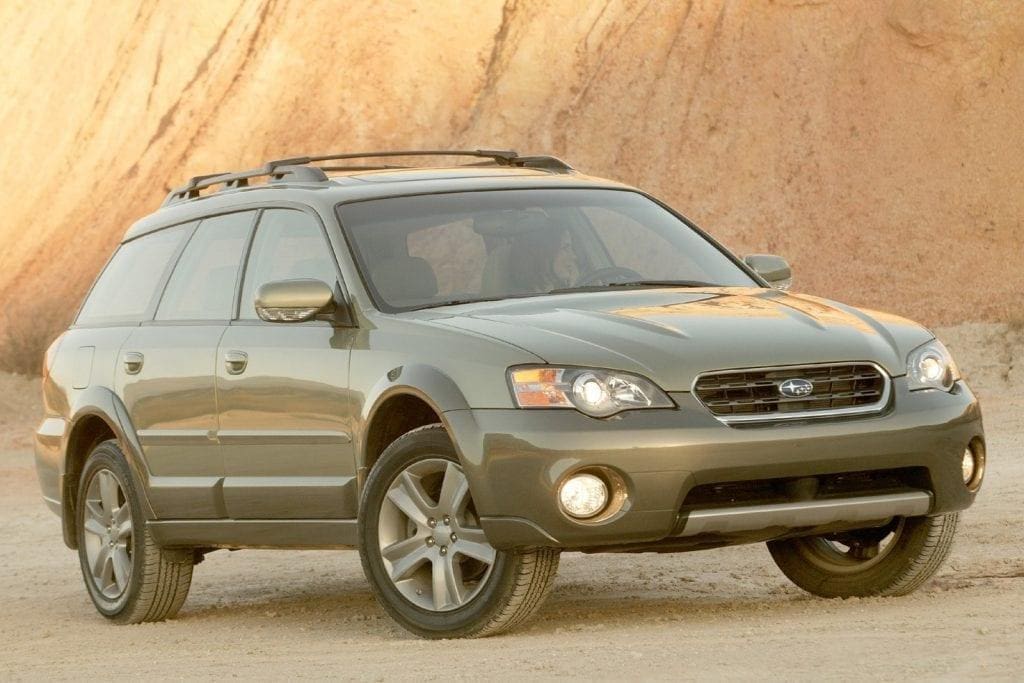
3rd Generation (2005-2009)
In 2005, the Outback was redesigned again, gaining more size and power. Its EJ 2.5 liter four cylinder engine was now up to 175 hp, while gaining a Partial Zero Emissions Vehicle (PZEV) rating for the first time. The 3.0 liter flat six, now offered in the 3.0R model, jumped to 245 hp, but the big news was a new turbocharged engine.
The new Outback XT got a turbocharged 2.5 liter flat four from the high performance WRX STI, producing 250 hp and 250 lb-ft of torque. That was considerably more torque than the six cylinder’s 219 lb-ft, but the model didn’t sell as well as expected. Most buyers went for the standard four cylinder instead.
Easily identified by its functional hood scoop, the Outback XT also got a 5-speed automatic, and it could reach 60 mph in just 7.1 seconds. Not bad for a wagon that weighed over 3600 lbs. This generation also added 1.3 inches to the wheelbase over its predecessor. That, plus a wider track, give it a bit more room inside. To shave some weight, Subaru made its hood, front bumper assembly, and liftgate out of aluminum.
Outback sales continued to grow, far exceeding the Legacy wagon on which it was based. By 2008, the standard Legacy wagon was discontinued in America. The midsize Legacy sedan continued, and the Outback, now the best selling wagon in America, closed in on the milestone of 100,000 annual sales.

4th Generation (2010-2014)
In 2010, Subaru responded to the continued demand for SUVs in America with the next generation of the Outback. It was 4 inches taller and 2.8 inches wider, but more importantly it also had a 2.8 inch longer wheelbase, which greatly increased its interior space. There was more cargo space as well, and the Outback grew even more luxurious. For the first time, its side windows were no longer frameless, which helped stiffen its structure and keep more wind and road noise out.
Other updates included an increase of ground clearance to almost 9 inches and new a Continuously Variable Transmission (CVT), which helped the fuel economy of the 170 hp EJ four cylinder base engine. Though few opted for it, a manual gearbox was still offered, now as a 6-speed. The turbo engine was dropped, and the six cylinder grew from 3.0 liters to 3.6 liters, upping output to 256 hp. The new Outback won Motor Trend’s SUV of the Year and had its best sales year yet with over 93,000 sold in the United States. By 2014, that number had grown to nearly 139,000.
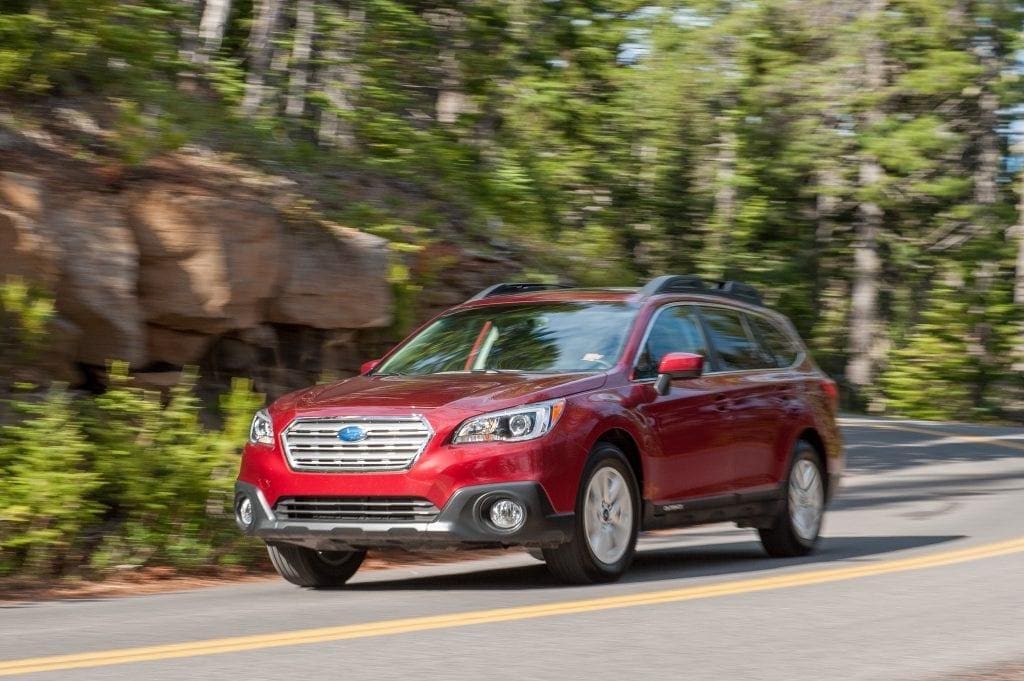
5th Generation (2015-2019)
Two decades after the original, the fifth generation Outback launched with a larger and more luxurious interior and even more SUV design influences. Modern day tech-based safety systems had also arrived, and for the first time Subaru offered blind-spot monitoring, rear cross-traffic warning, adaptive cruise control, and its camera-based Eyesight collision warning and avoidance system, which will slow or stop the vehicle automatically to avoid or diminish the severity of an accident.
Its engine lineup remained the same, and of course all-wheel drive remained standard. It was the largest Outback to date and the most successful. Sales surpassed 150,000 units in 2015, and the following year the Outback was Subaru’s best-selling model.
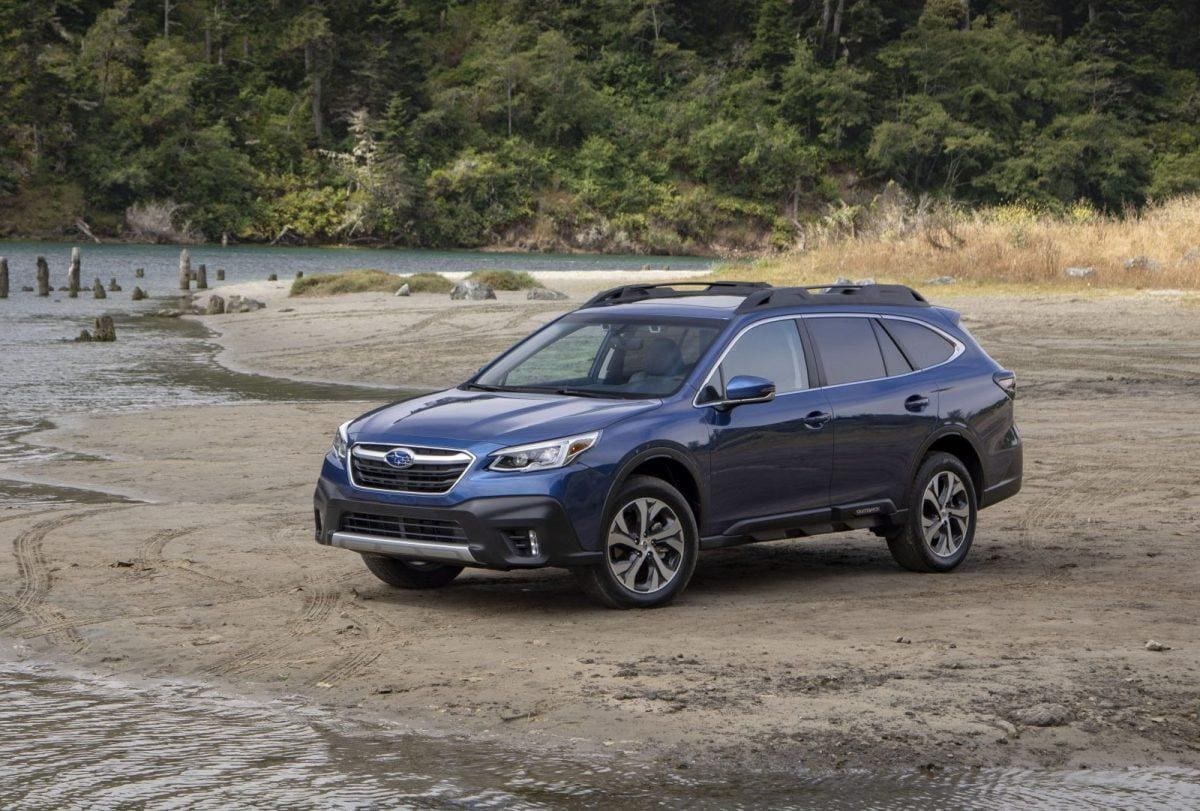
6th Generation (2020-present)
For 2020, Subaru introduced its next iteration of the Outback to rave reviews and strong sales. Car and Driver said, “The Outback is Subaru’s best-selling model, and the new one is better than the old one.”
Though its exterior design didn’t change much, the sixth gen Outback is truly all new. It’s 1.4 inches longer and 0.6 inch wider than the outgoing model, and to increase space, safety, and refinement, it’s now built on Subaru’s more rigid Subaru Global Platform. Rear legroom increased by 1.4 inches, and the cargo space behind the rear seat now measures 33 cubic feet.
Up front the big news is an available Tesla-like 11.6 inch touchscreen for its infotainment system. The massive screen is offered in all but the base model, which gets two smaller screens.
Its powertrains are also new, with turbocharging and XT badges making a return. The standard 2.5 liter flat four now makes 182 hp, while the three upper trim levels get the 260 hp turbocharged 2.4 liter four from the brand’s 7-passenger Ascent. All models now have a CVT transmission, which does a good impression of a well-tuned 8-speed. With the base engine, 0-60 mph takes about 8.5 seconds, and it’s genuinely quick with the turbo, getting there in about 6.3 seconds.

Problem Areas
Although the Subaru Outback is considered to be durable and reliable, every car has a few skeletons in its closet. In 2013, some Outbacks with the 2.5 liter engine developed a piston ring problem, which led to excessive oil consumption and an eventual class action lawsuit against the automaker. The litigation was settled in 2016 with the affected owners receiving reimbursement for the repairs plus an extended warranty. No one got rich, except maybe the lawyers.
When you’re shopping for an older Outback with higher miles, check the seals for the camshaft and crankshaft at the front of the engine. They’re known to age and leak oil. Buyers should also check any used Outback for head gasket issues, especially those with high miles. Additionally, a torque converter issue can cause some unwanted vibration under acceleration. Feel for it during your test drive.
And look for rust. Remember, Outbacks are bought to be used year-round in all sorts of weather. In most parts of the country, that means snow and salted roads. Don’t just check the body for rot, get underneath and carefully check the chassis, floors, suspension, and other metal parts, like brake lines. If a car is rusty, walk away.
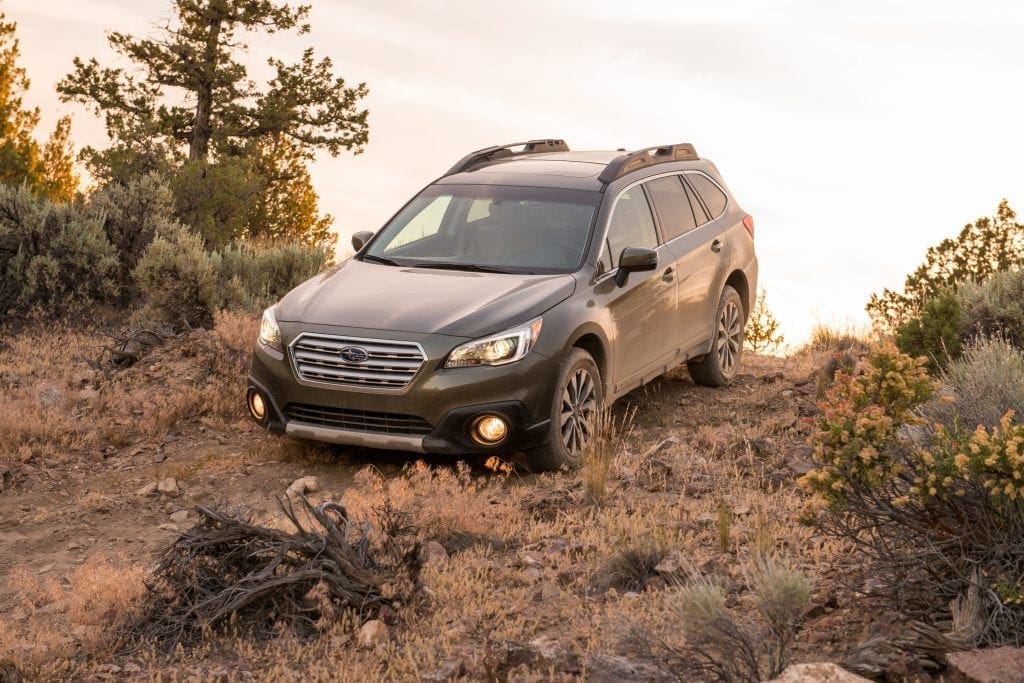
Buying Tips
If you’re looking for a fun driver with some collector car chops and that may hold its value as you enjoy it, early first gen Outbacks with low mileage are a good bet. And they’re extremely affordable. Even cherry examples can cost less than $5,000. Our research turned up a clean 1997 model with 85,000 miles in Virginia for $3,999. Find one with the double overhead cam EJ25 2.5 liter engine from the Legacy 2.5GT model plus the available manual gearbox, and you’ll have found a unicorn — likely with a higher price to match.
If you need something newer with more power and performance that your car cronies will still appreciate, search out a third gen Outback XT. Remember, they’re powered by the same turbocharged 2.5 liter flat four as the high-performance WRX STI model. The XT was offered from 2005-2009 and well-kept examples are out there for between $7,000 and $13,000, depending on their mileage and condition.
Otherwise, fourth and fifth generation models in the higher trim levels with the six cylinder engines will be the most enjoyable to drive and have the most features for the least amount of money. If safety is paramount, stick to a fifth gen model with all of the additional safety tech. Prices will range from about $5,000 for older examples with a ton of miles to nearly $40,000 for 2019 models with low mileage. For around $20,000, we recommend looking for a clean 2017 model with fewer than 50,000 miles.
Unlike many automakers, Subaru’s Certified Pre-Owned (CPO) program is available on models up to 10 years old, so that’s also a good option for buyers who want some additional peace of mind.
Photos courtesy Subaru and Wikimedia Commons